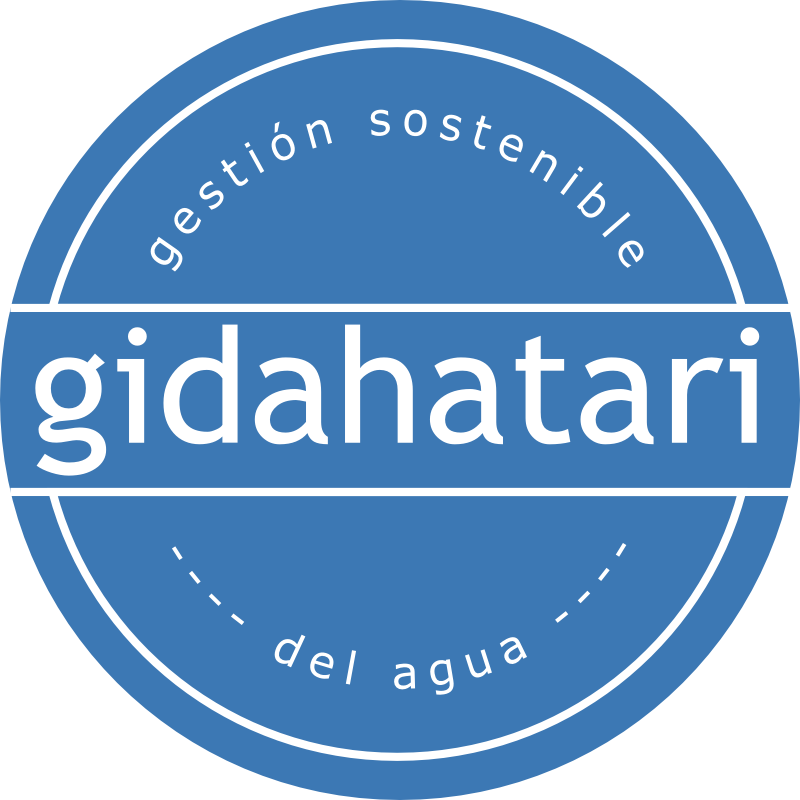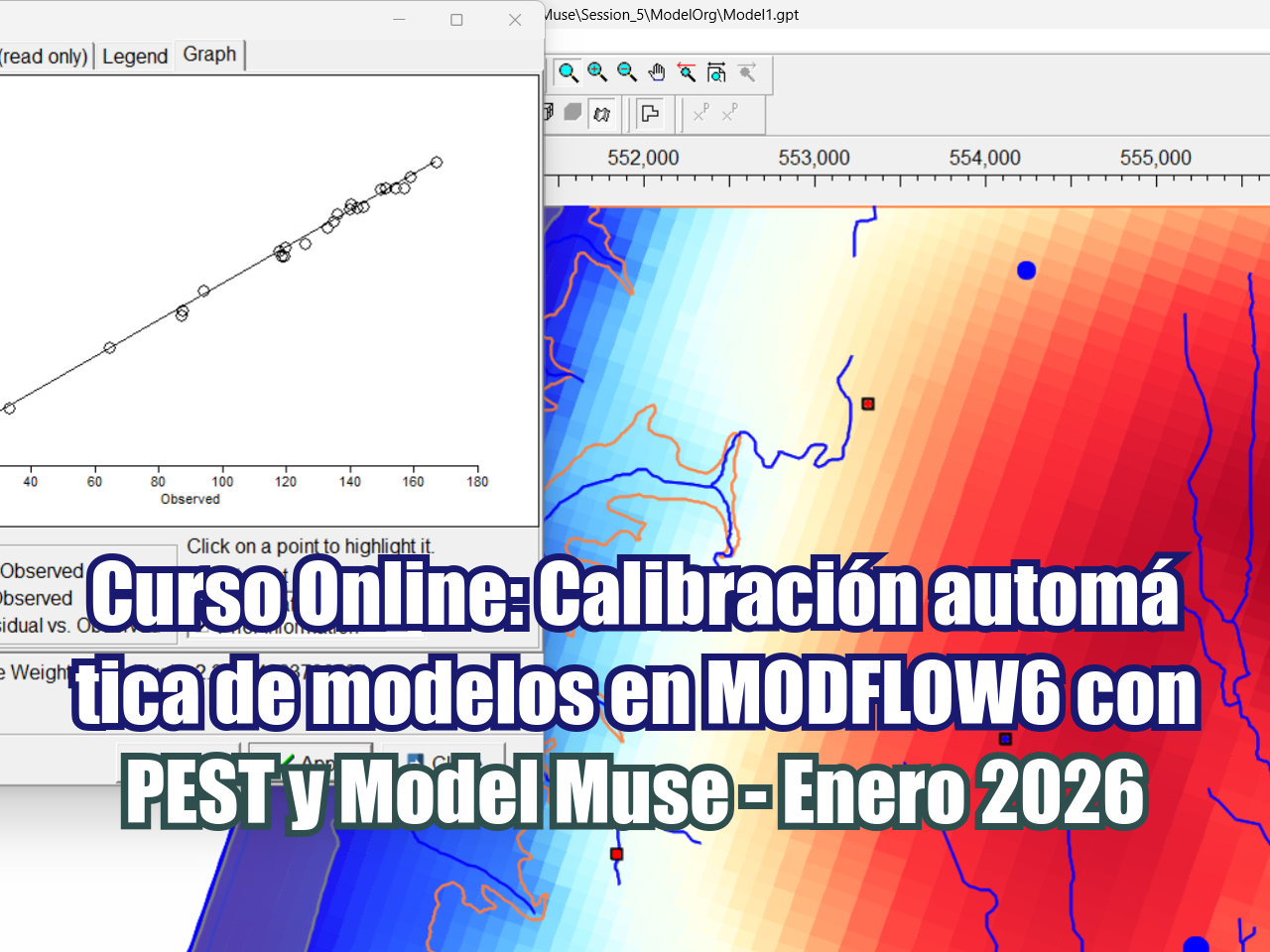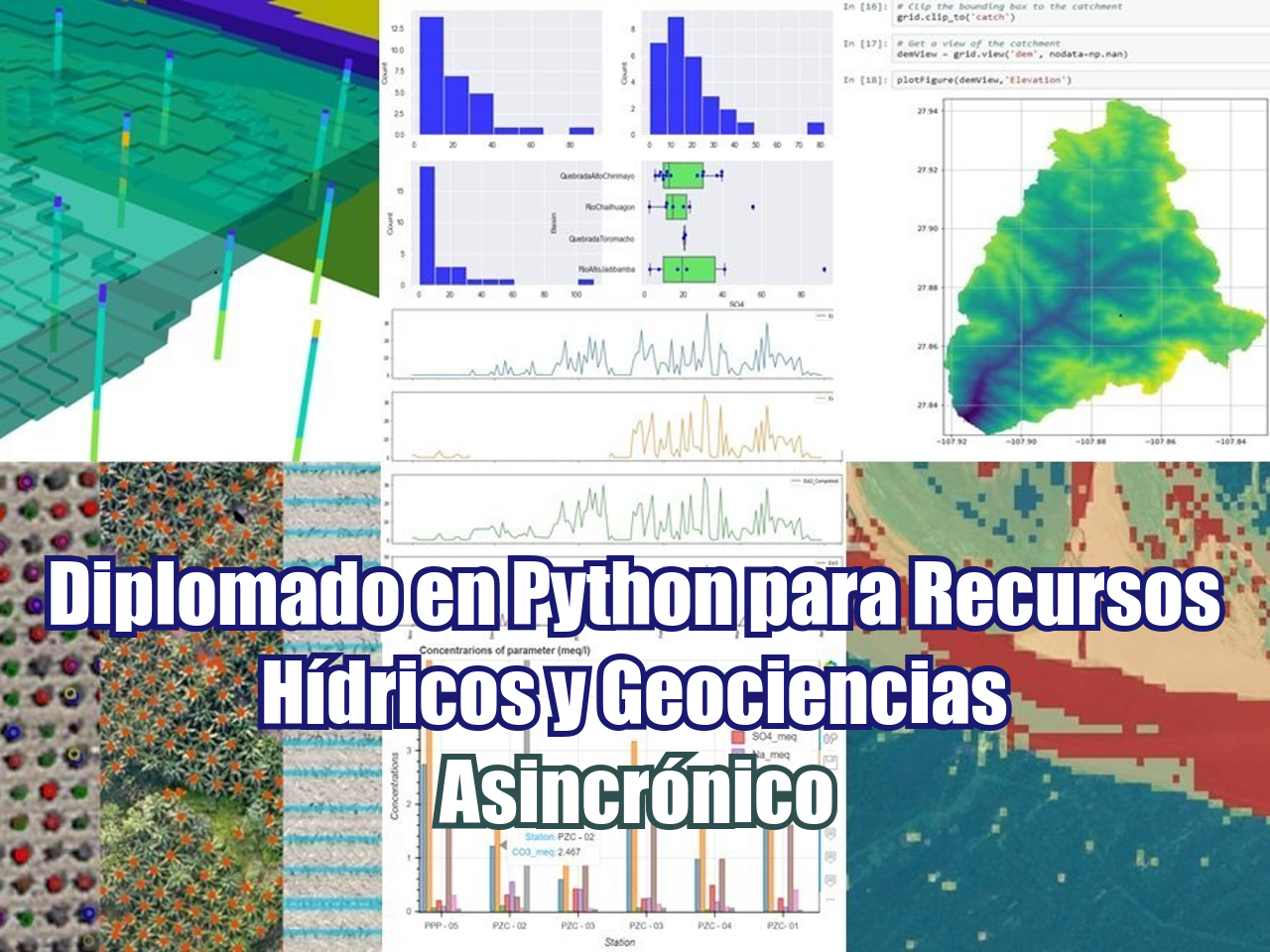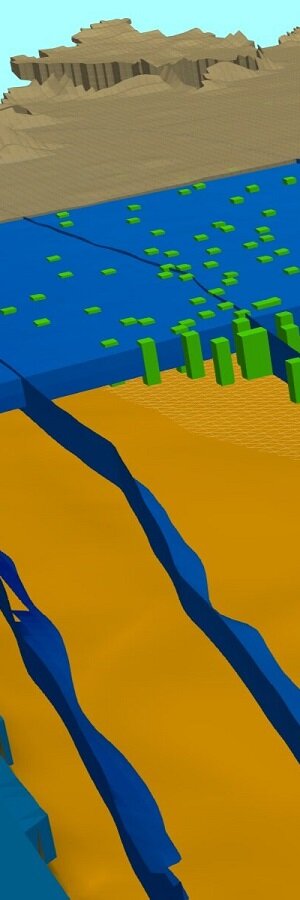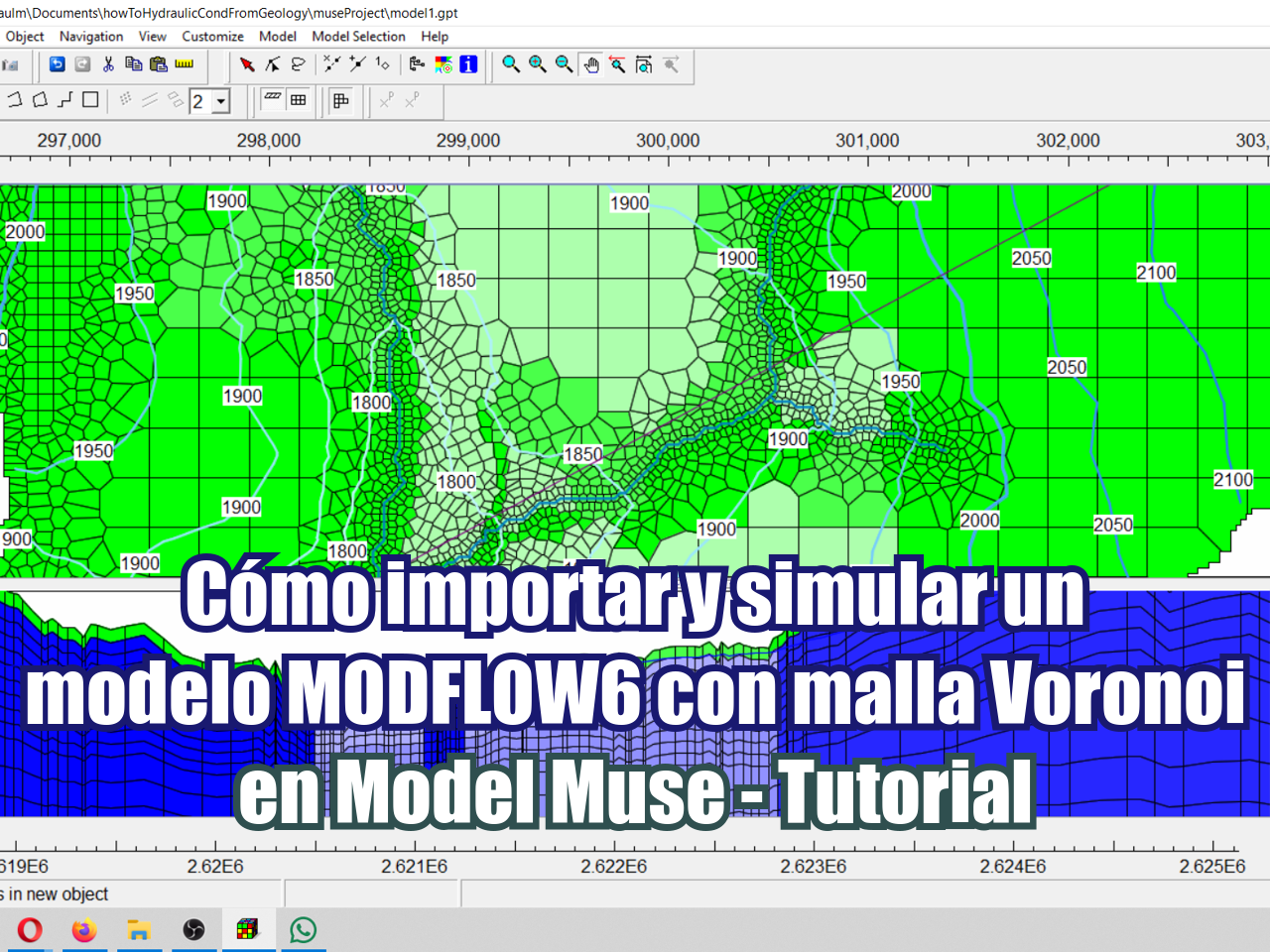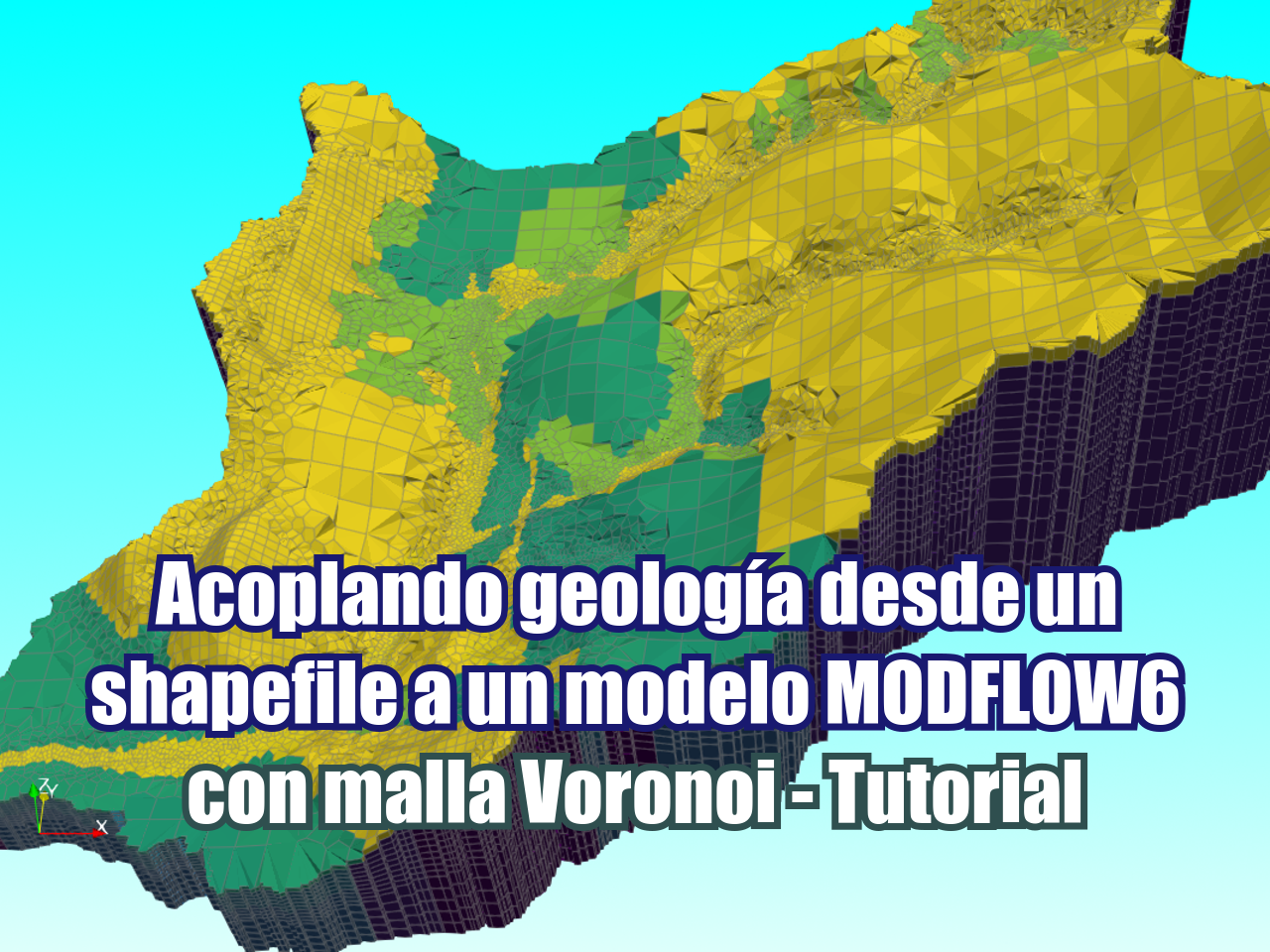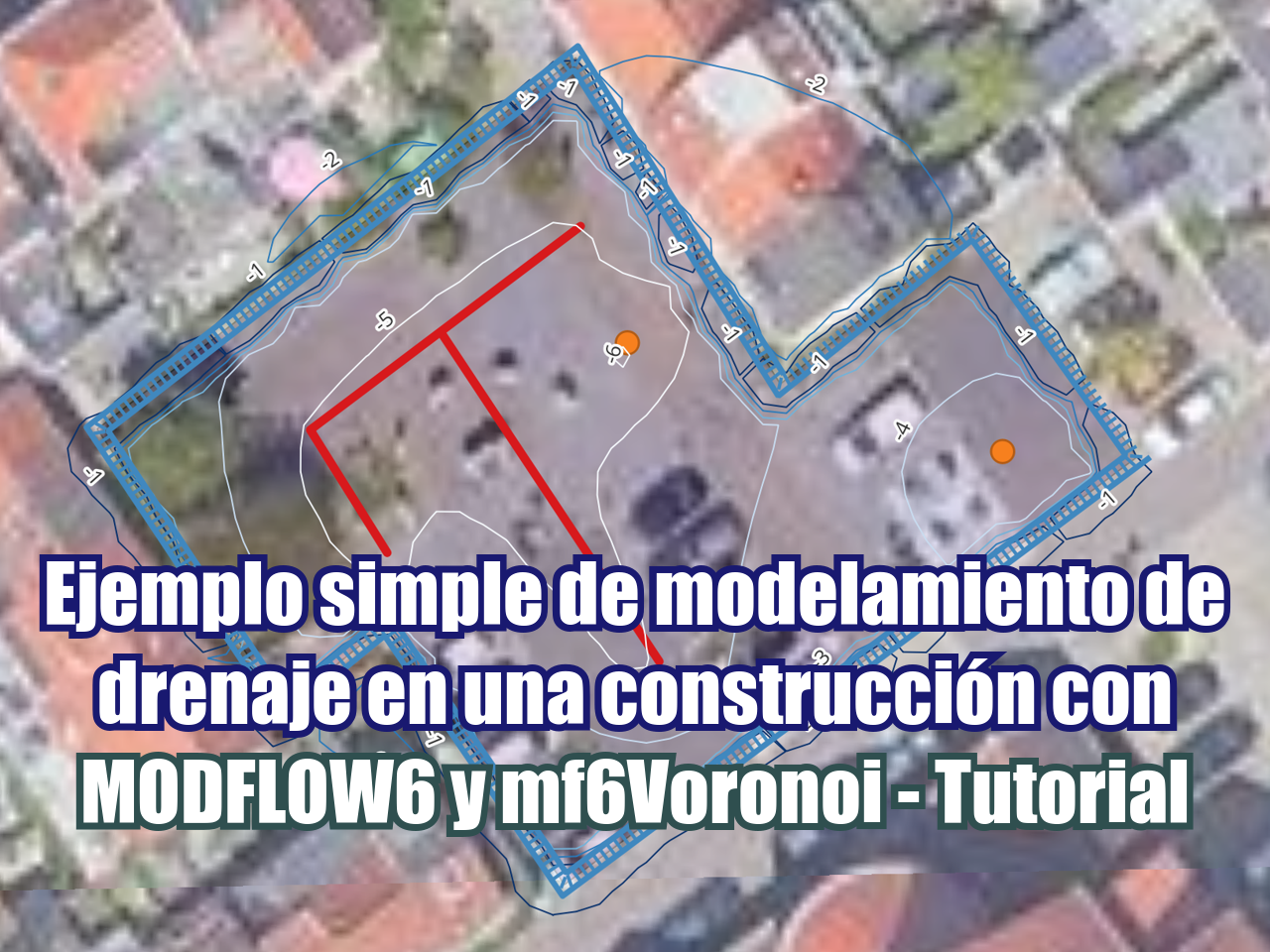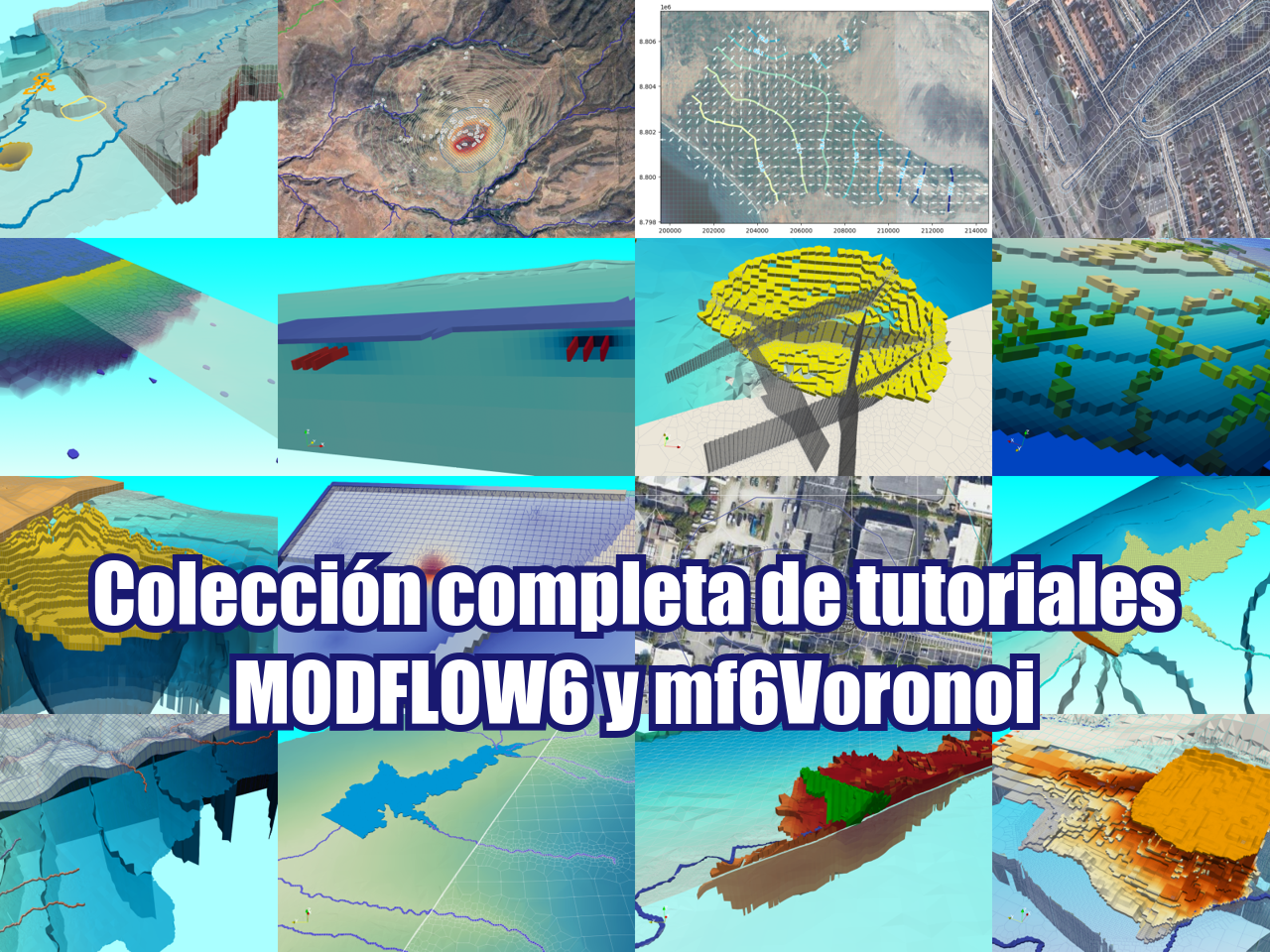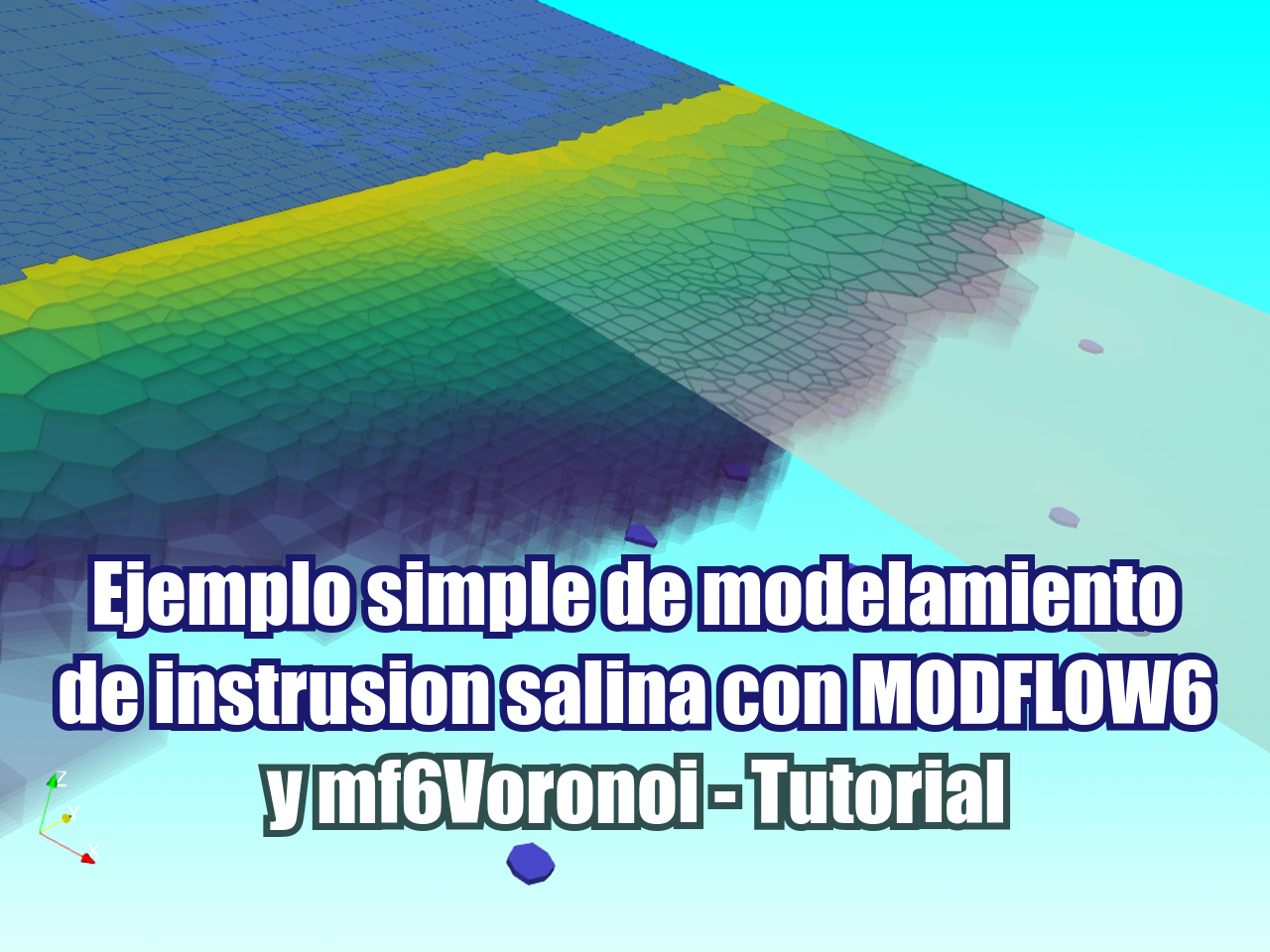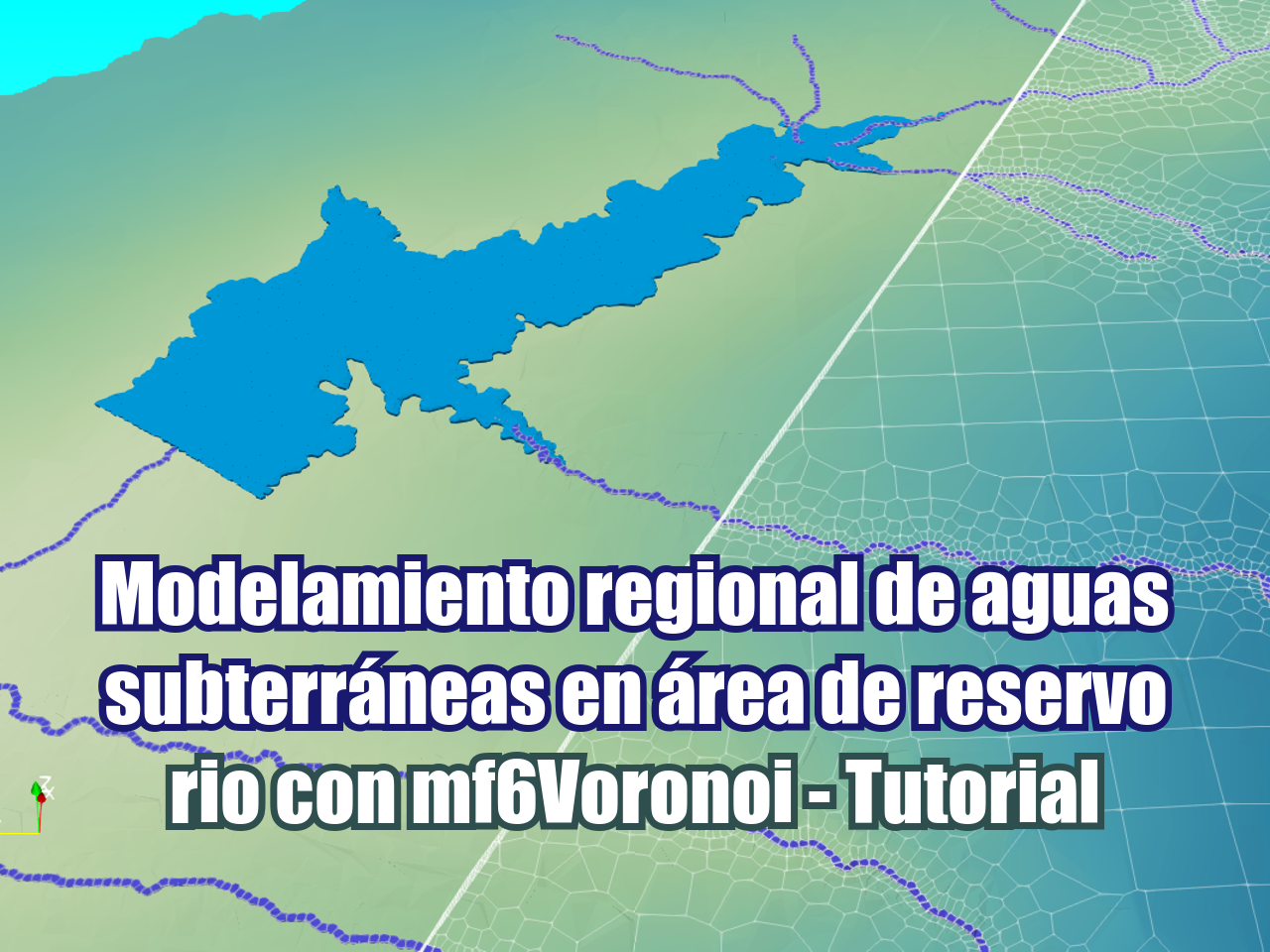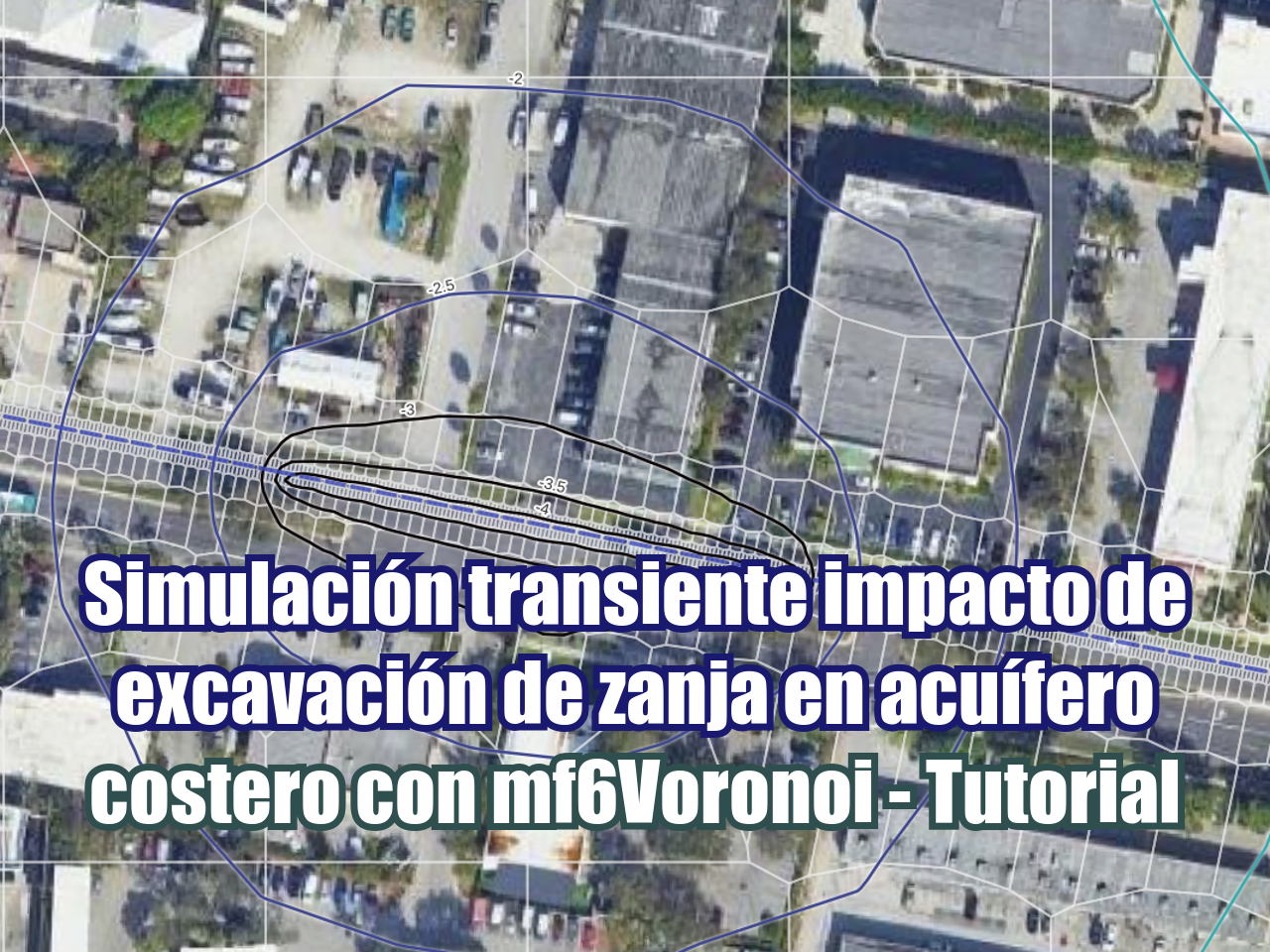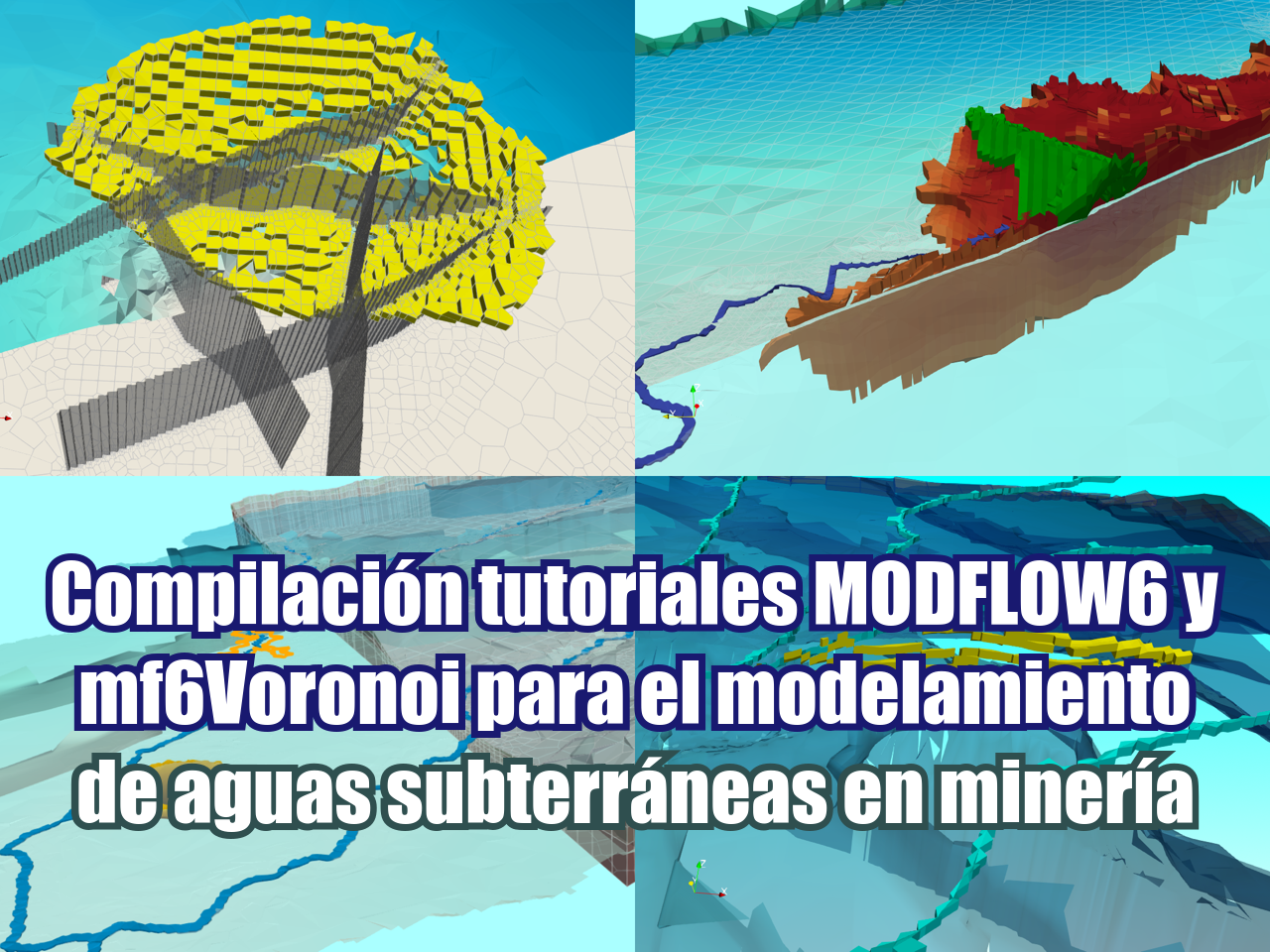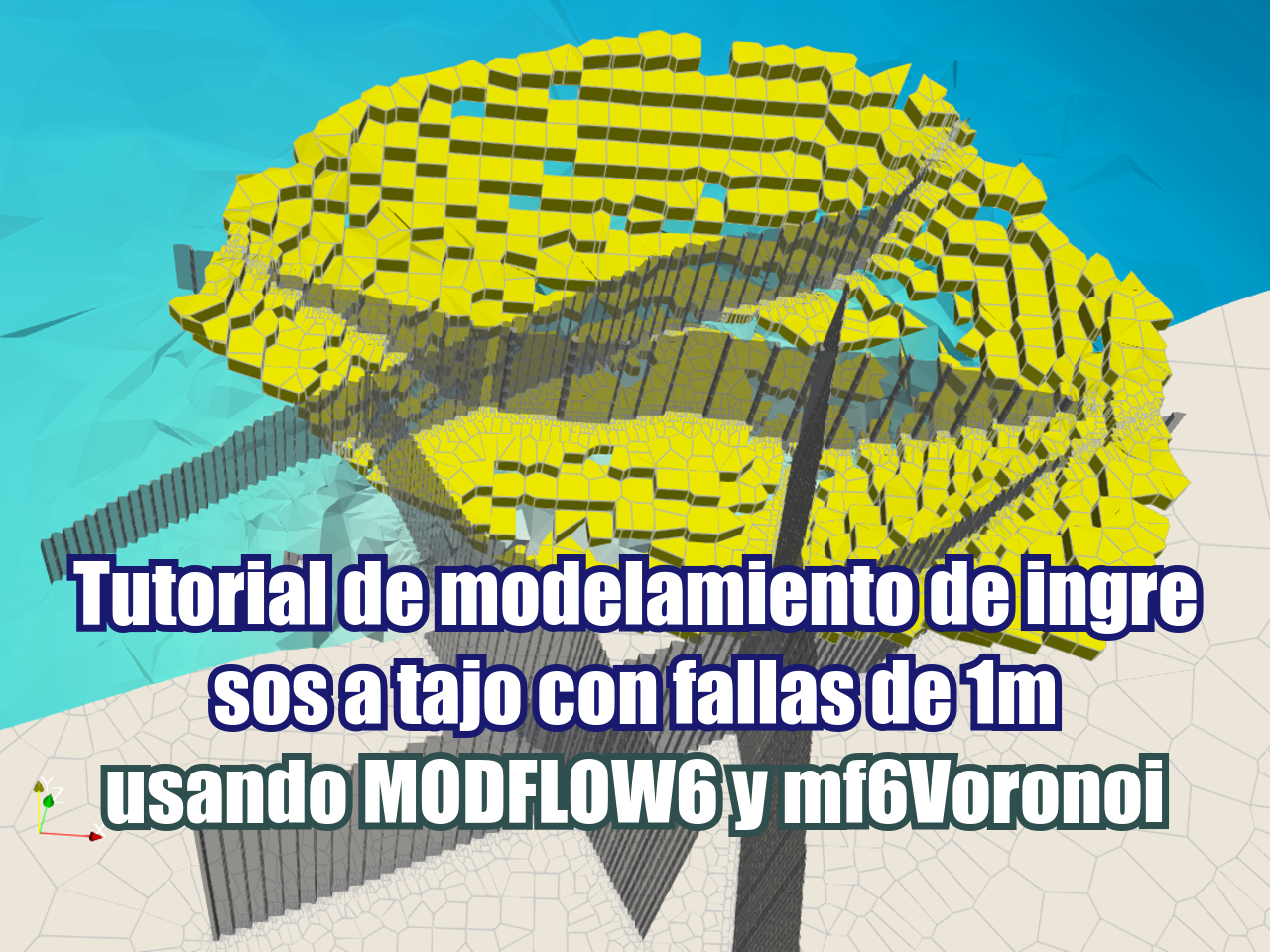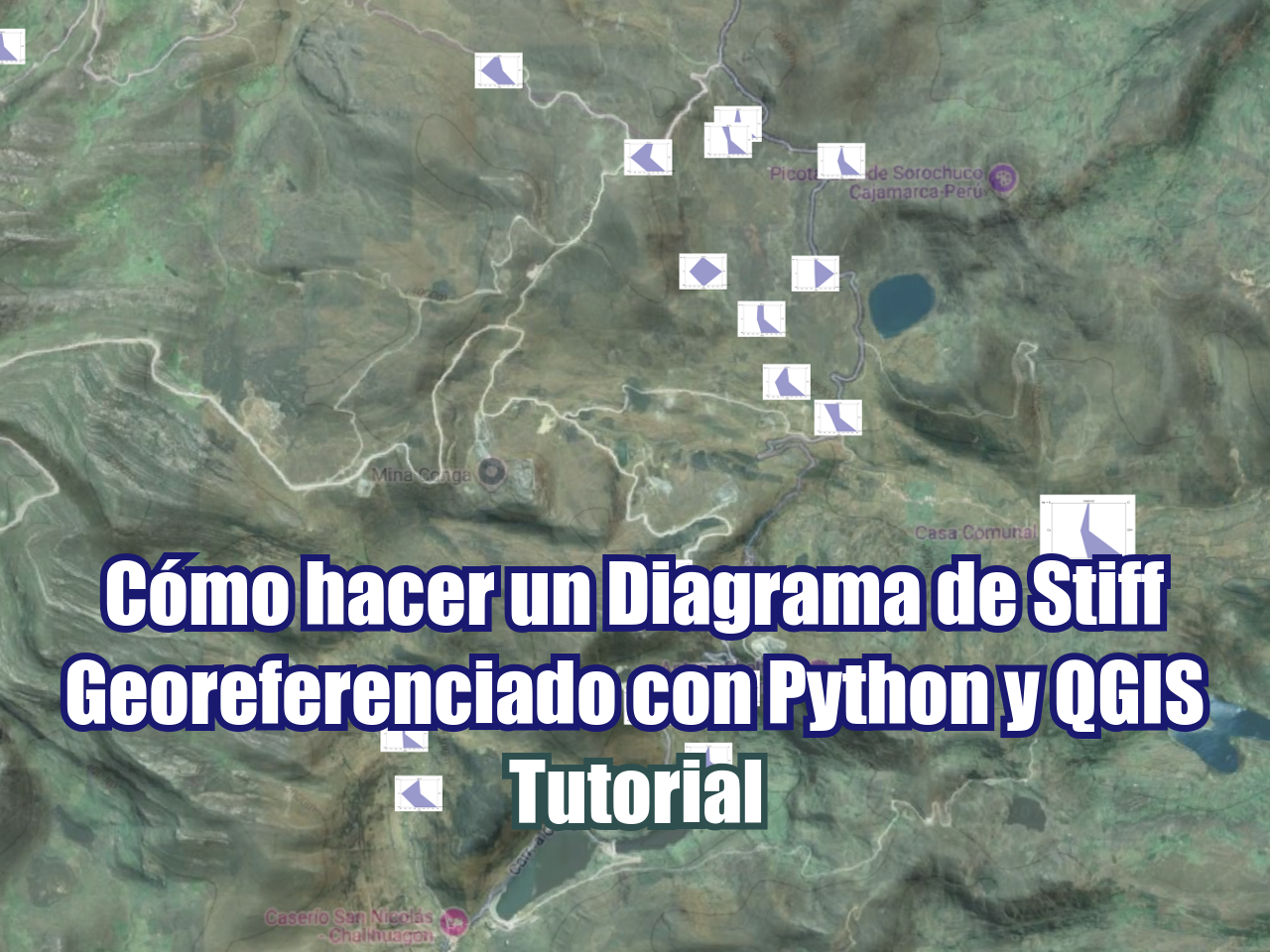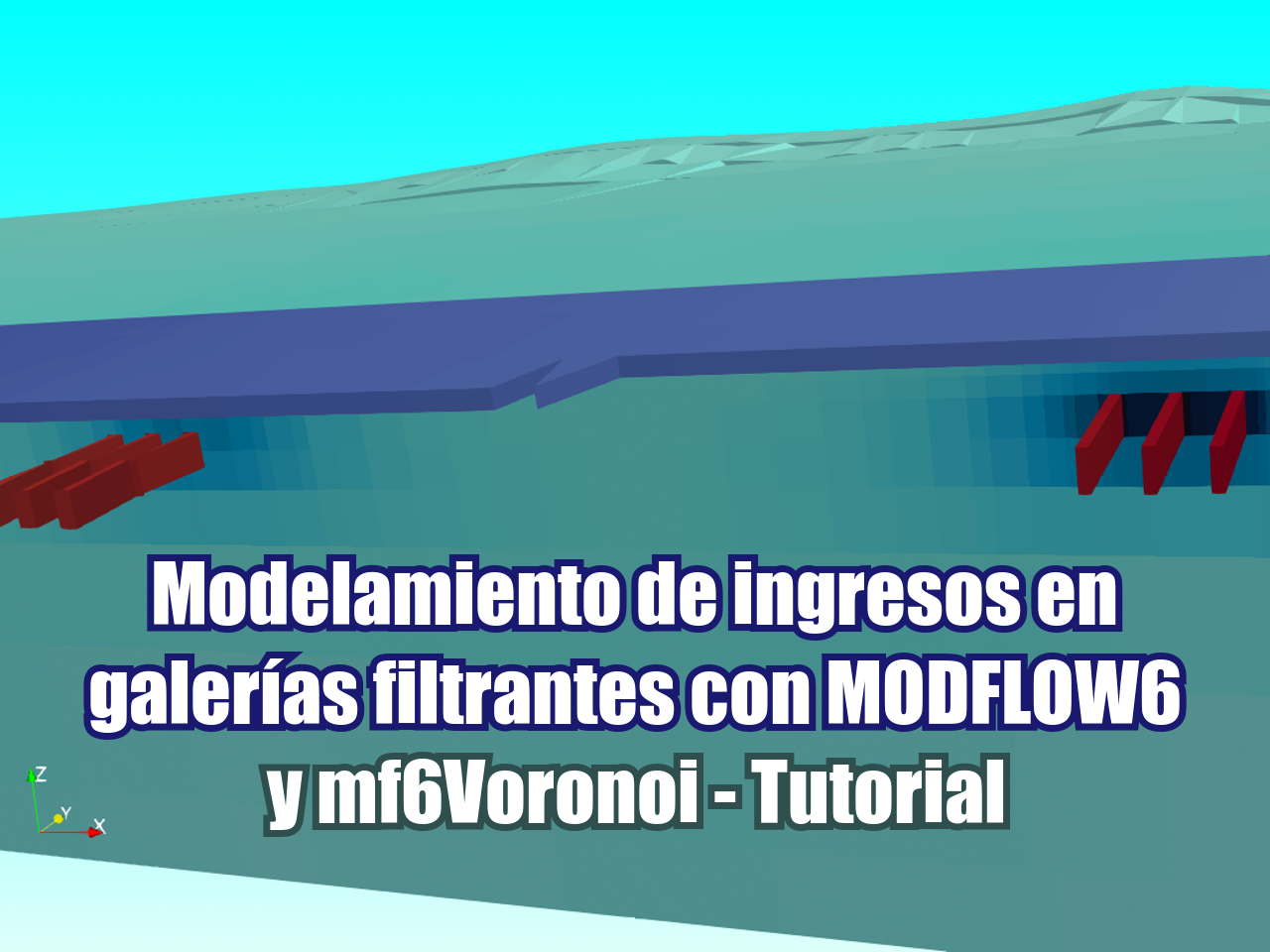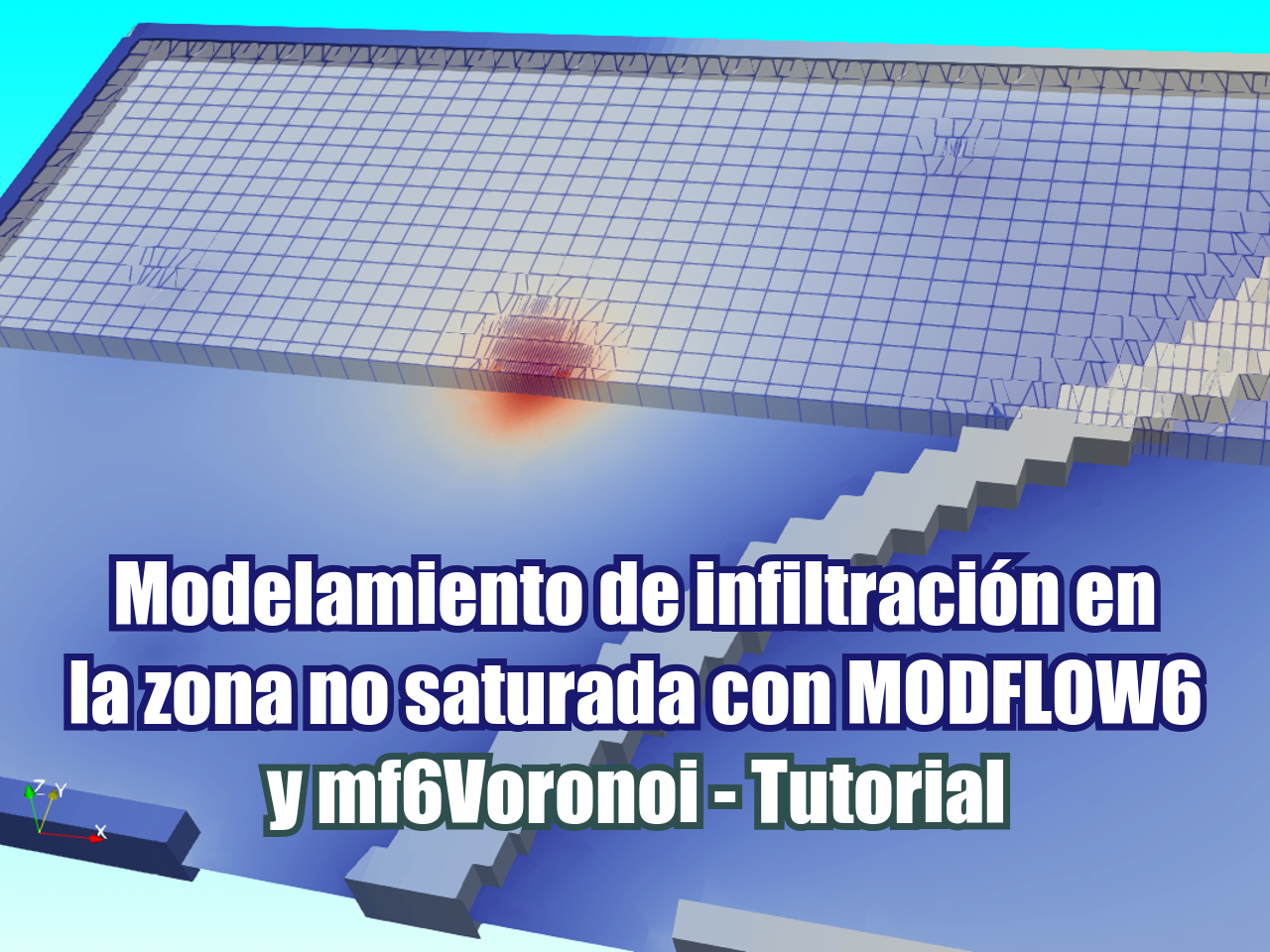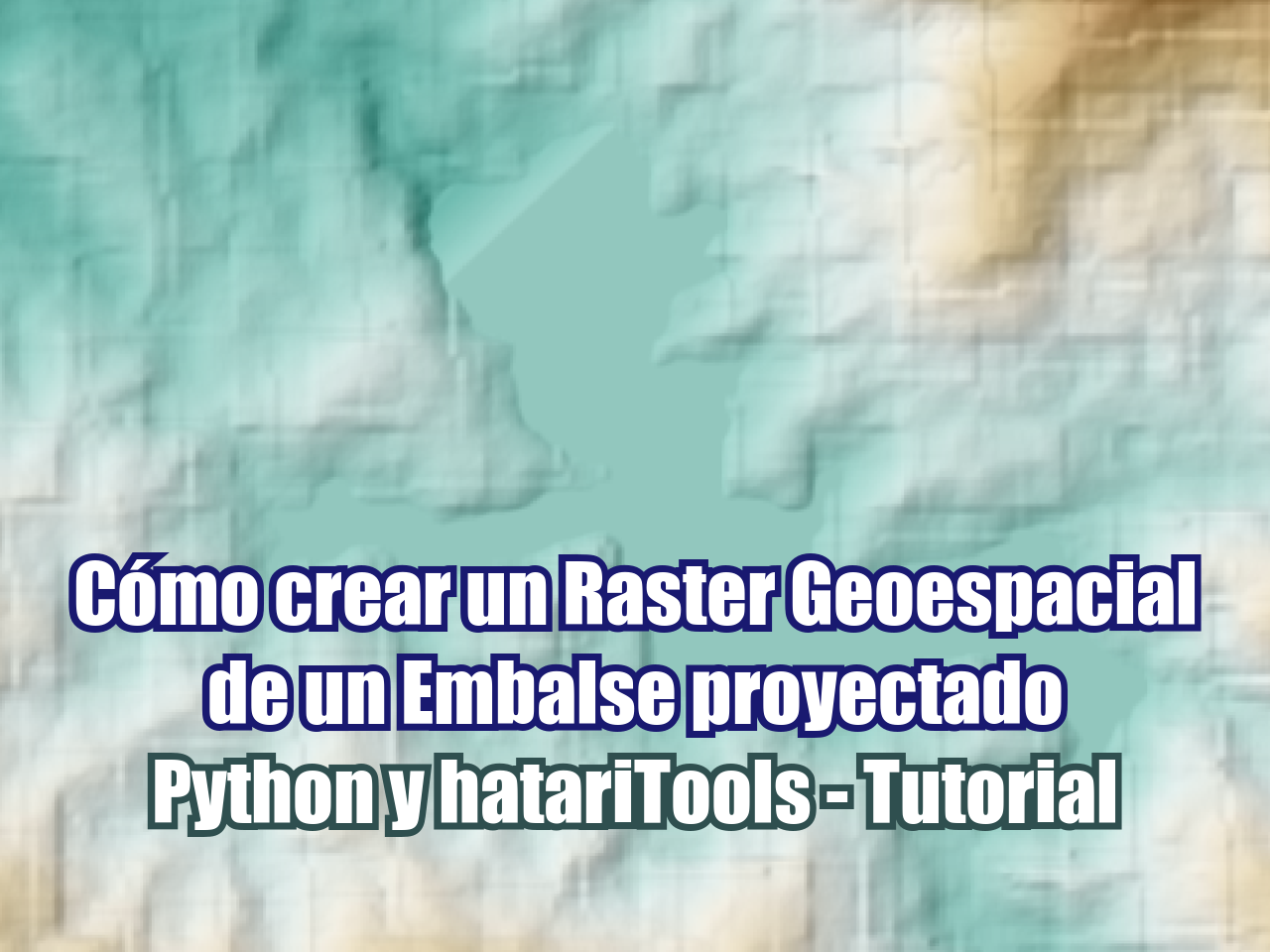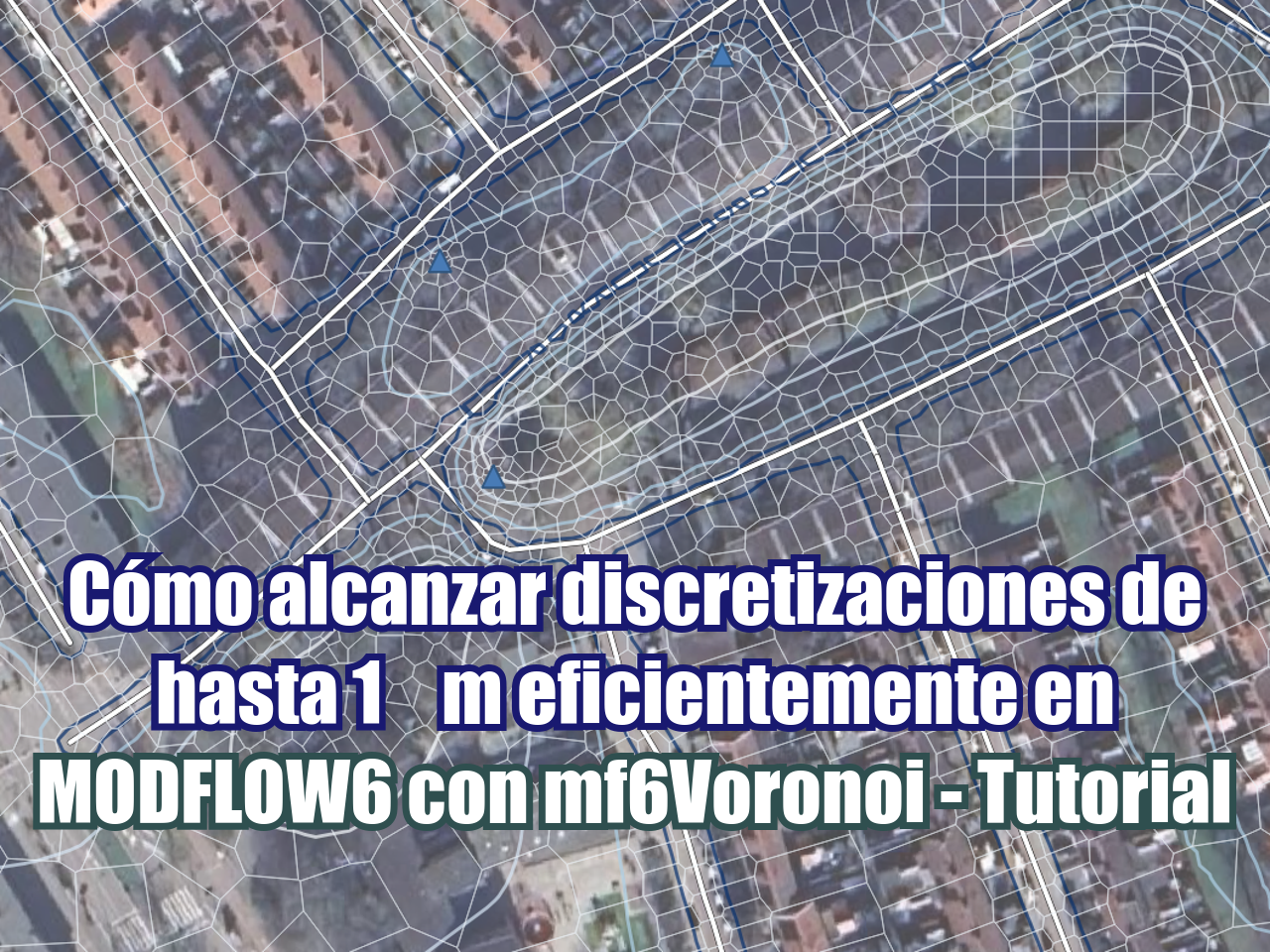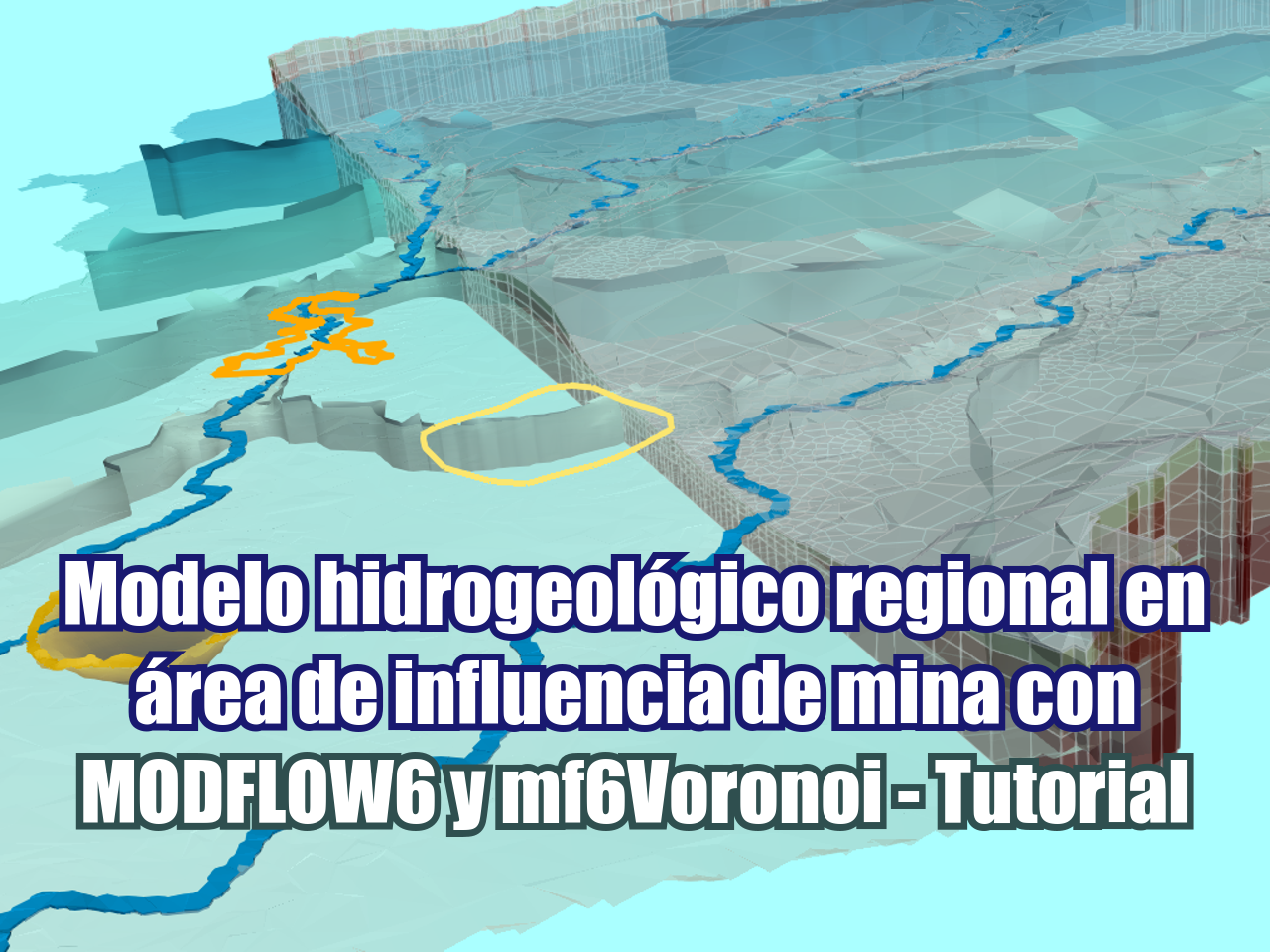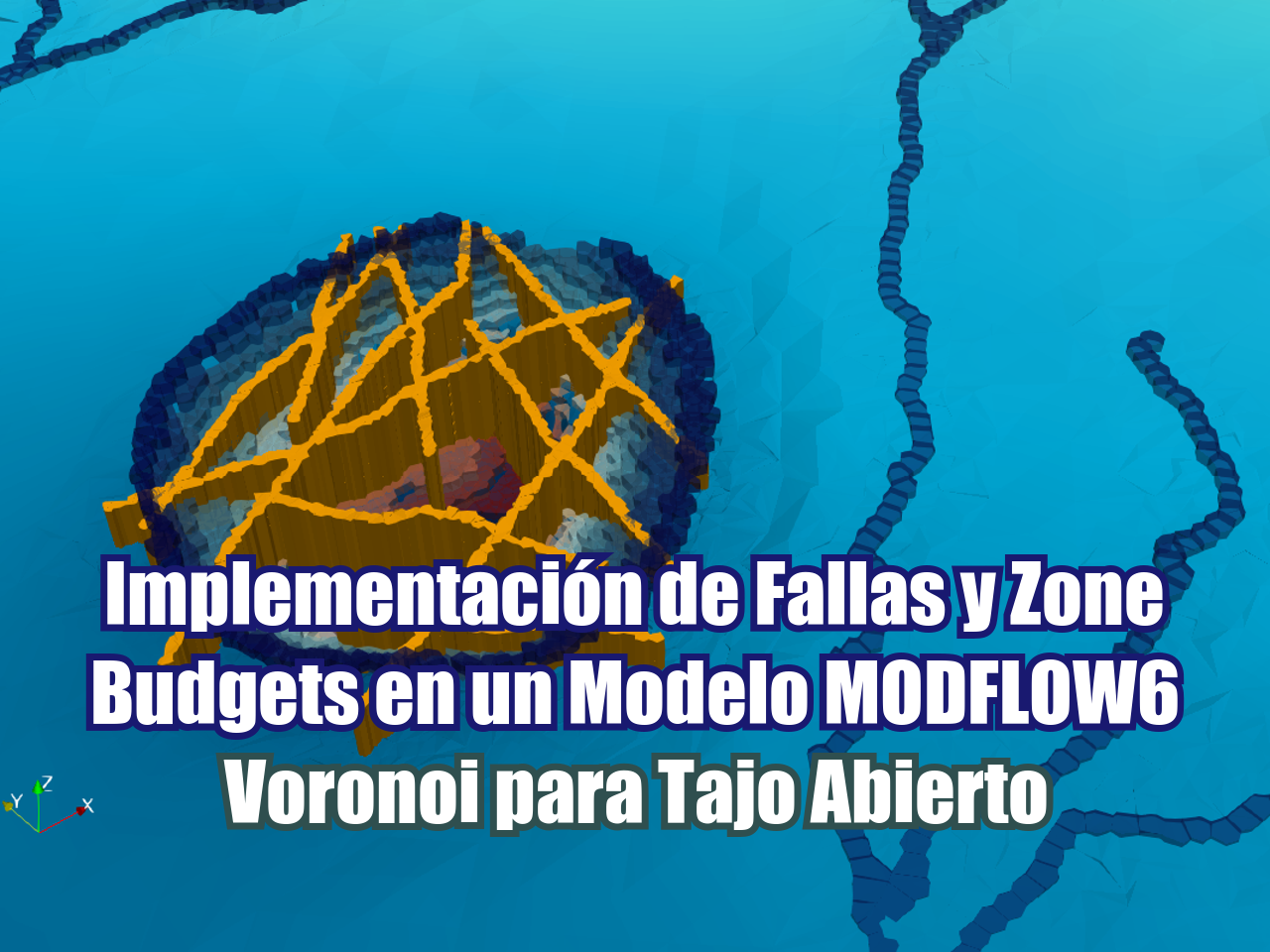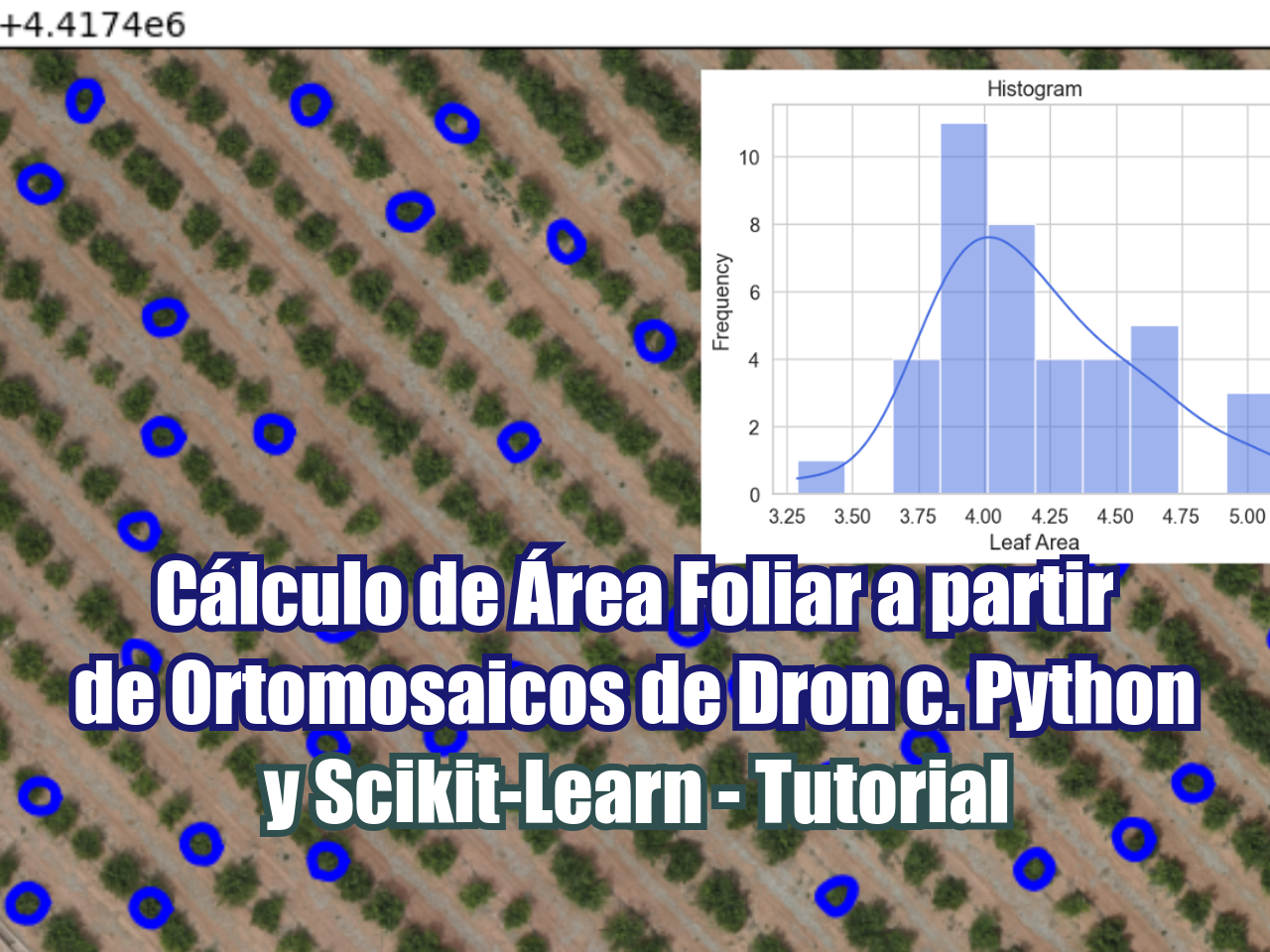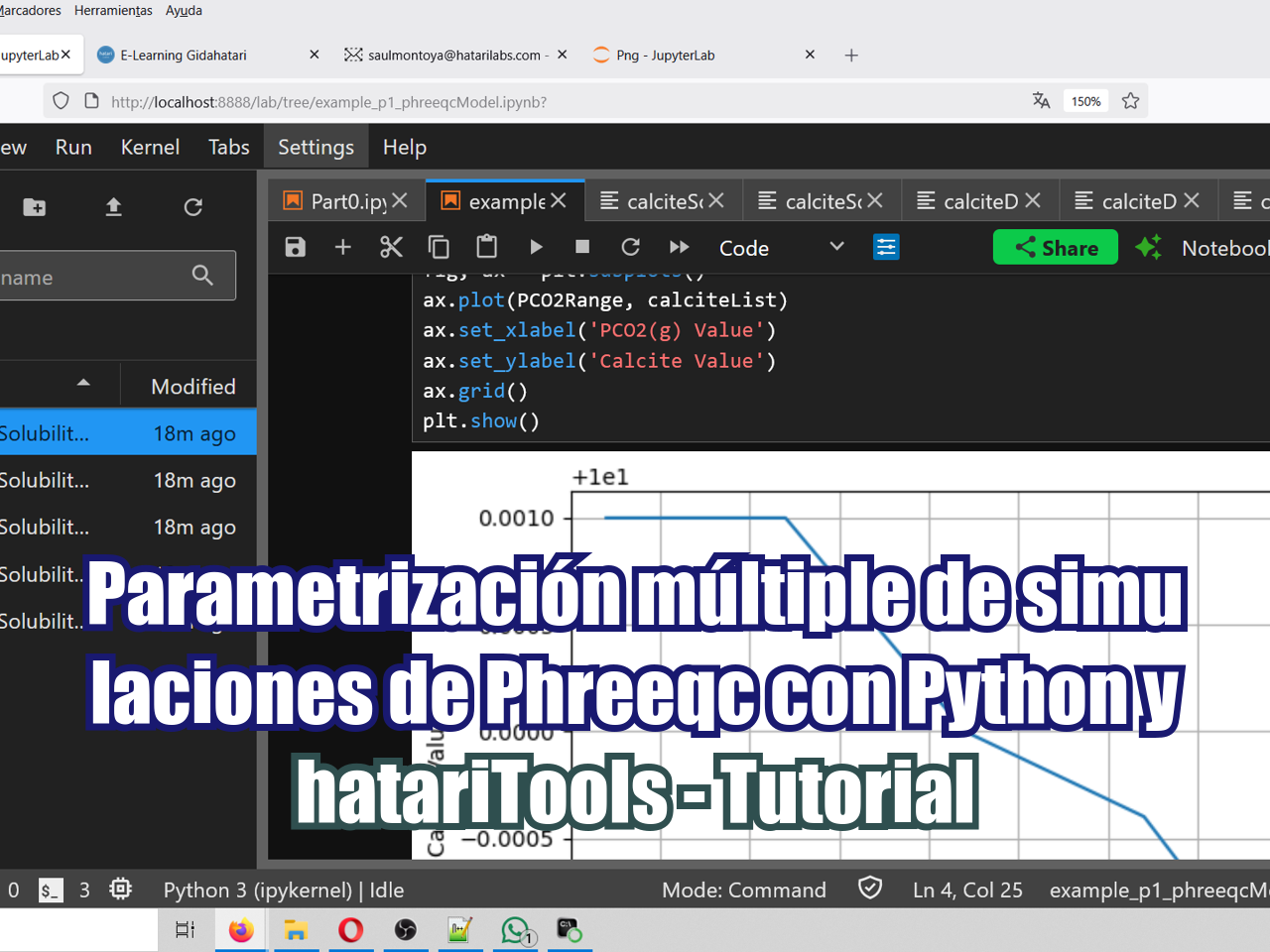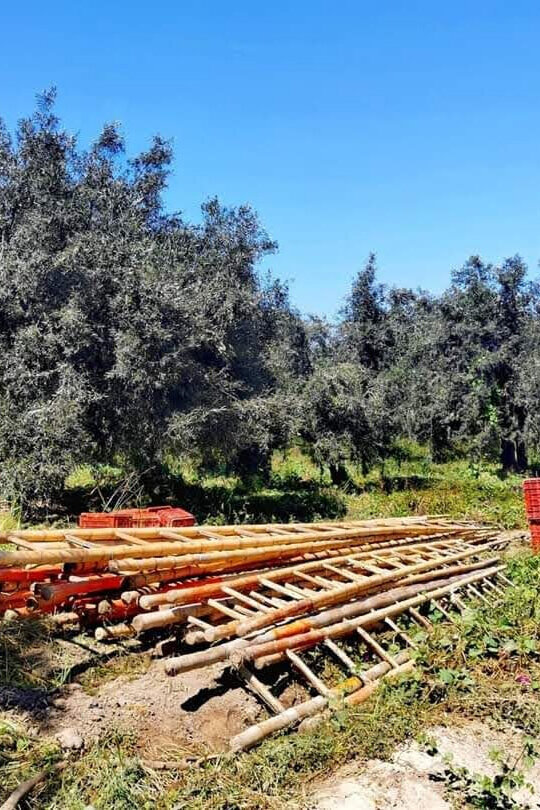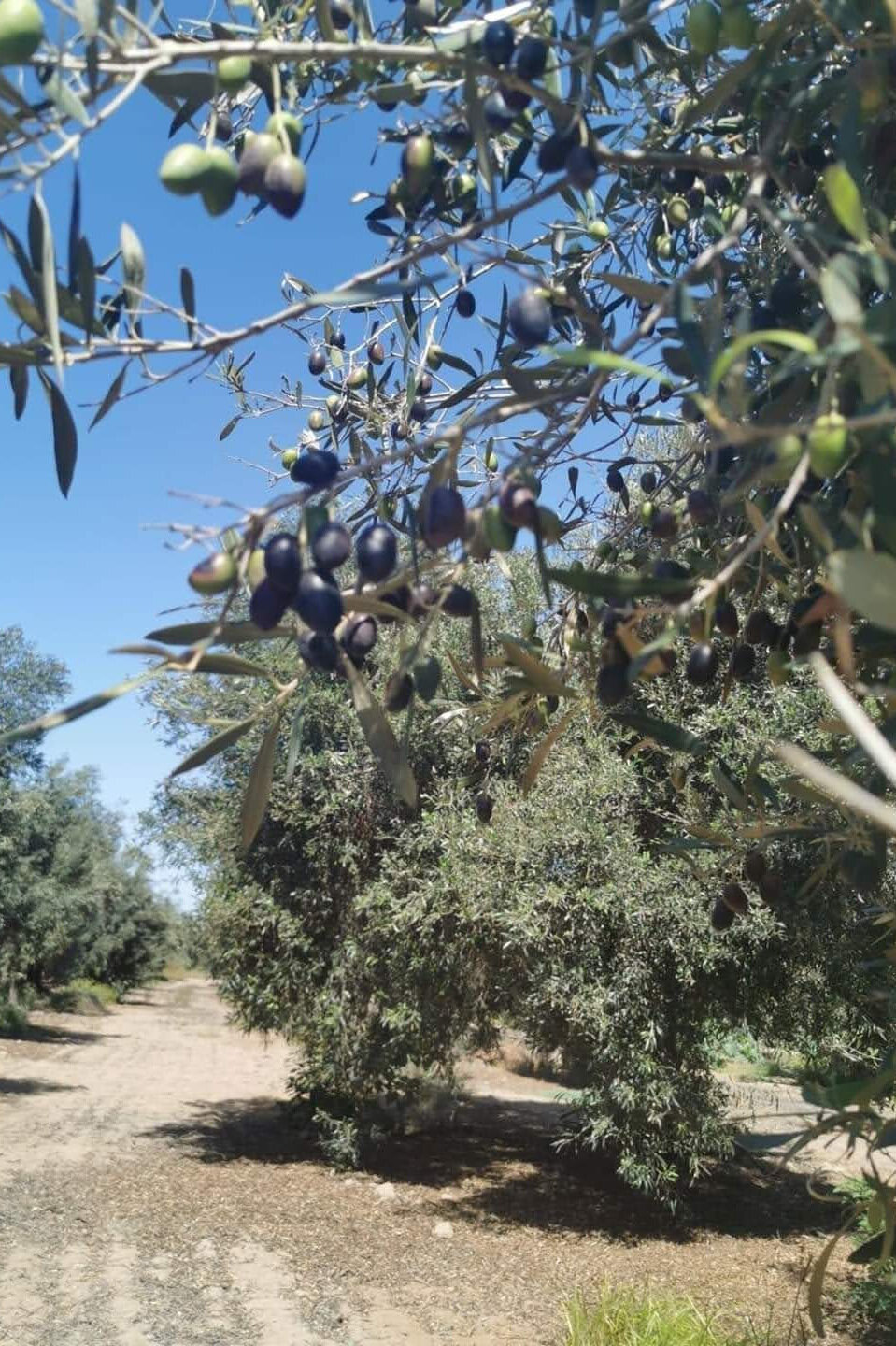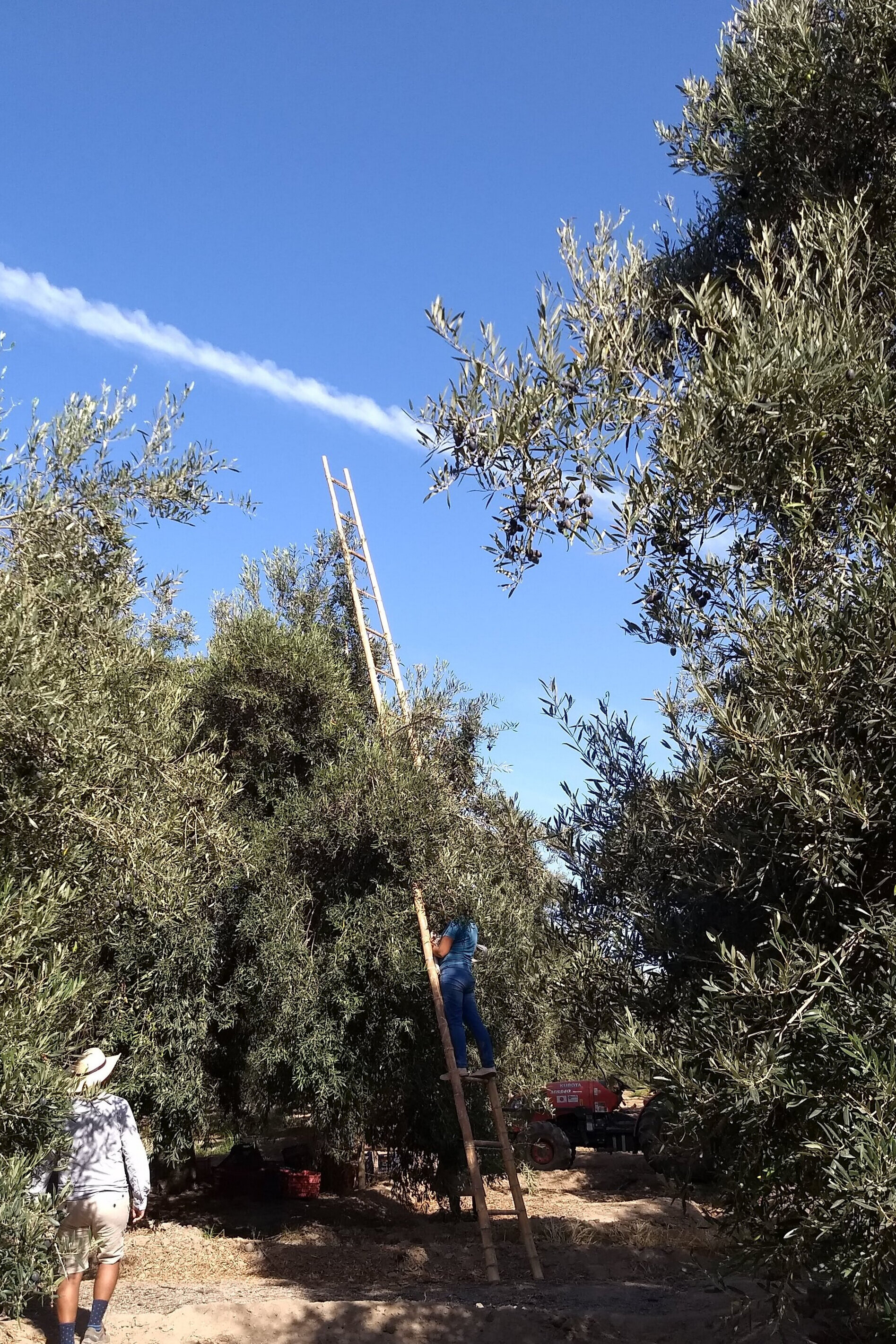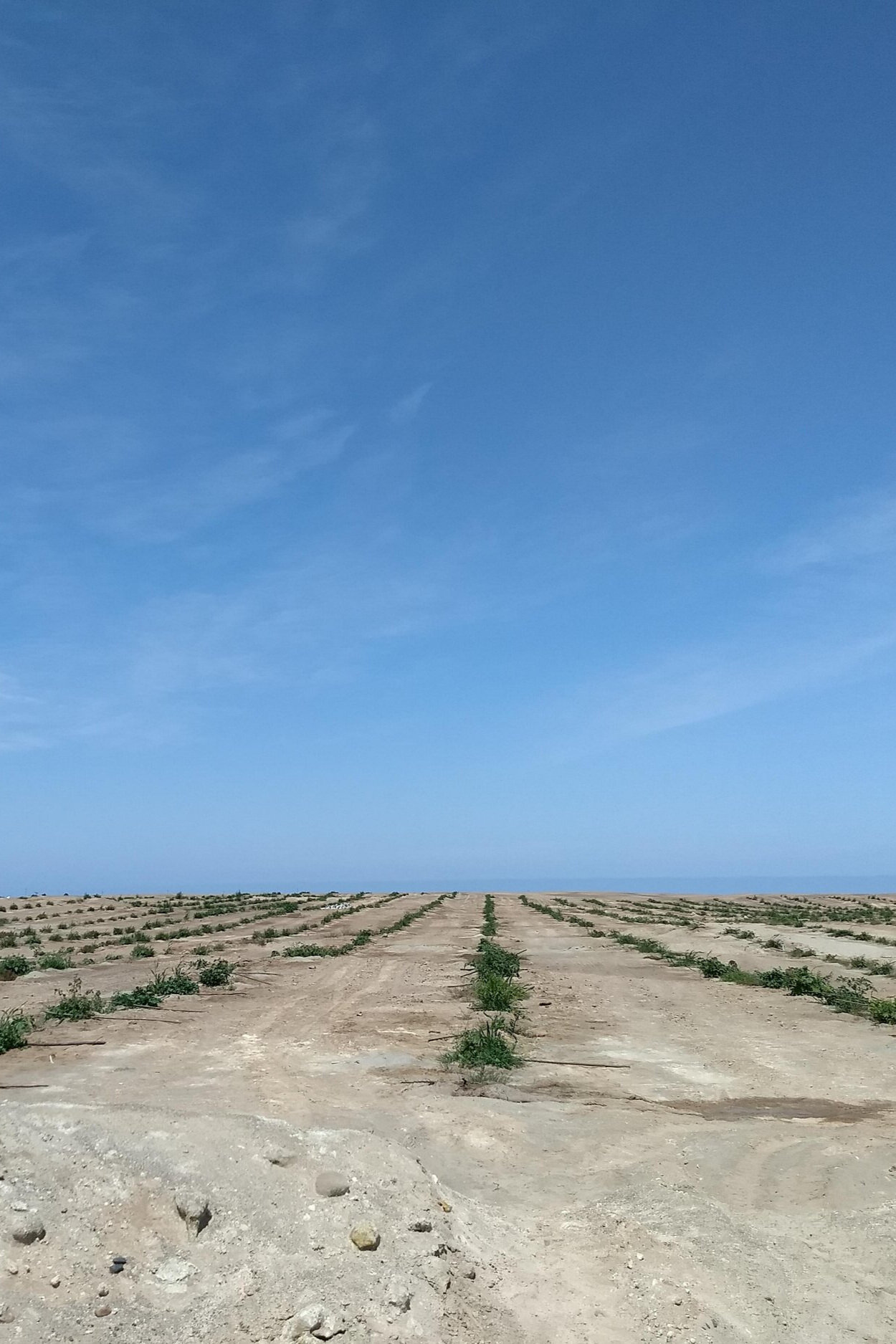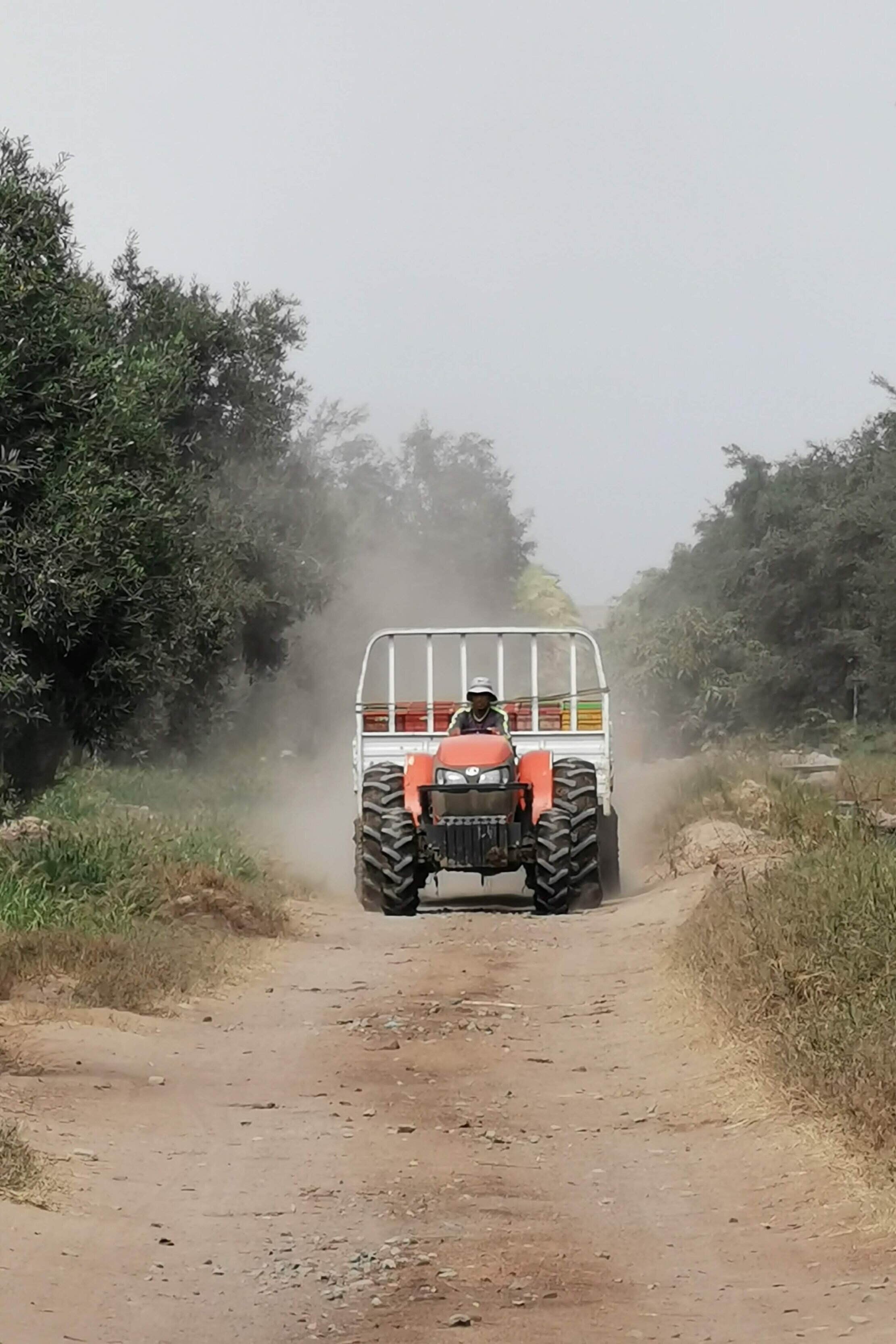El desarrollo de hidrogeológicos puede llevar mucho tiempo debido a todos los pasos involucrados como la construcción del modelo, la calibración y la visualización de salida. Es importante utilizar herramientas que puedan optimizar estas tareas y permitir que el tiempo ahorrado se utilice en el análisis del sistema de flujo y el estado de la calidad del agua subterránea.
Flopy es un conjunto versátil de scripts de Python que se pueden usar para ejecutar MODFLOW y MT3D, entre otros programas de agua subterránea relacionados con MODFLOW de una manera simple y eficiente. Este tutorial desarrollará un caso completo aplicado de modelamiento de flujo y transporte con MODFLOW, MT3D-USDS y Flopy. El caso de estudio describe un flujo de agua subterránea regional que tiene una fuente puntual con un esquema de remediación simulado en condiciones de estado estacionario para condiciones de flujo y transitorio para el modelamiento de transporte.
Contenido
El tutorial tiene el siguiente contenido:
Modelo de flujo:
Configuración de un modelo MODFLOW con Flopy
Establecimiento de discretización espacial y temporal.
Definición de parámetros hidráulicos.
Modelo de ejecución y representación de resultados
Modelo de transporte:
Configuración de un modelo MT3D-USGS con Flopy
Implementación de advección, dispersión y fuentes de masa.
Ejecución de transporte y simulación de salida
Tutorial
Código
Este es el código en Flopy para la simulación de transporte de contaminantes:
%matplotlib inline
import numpy as np
import matplotlib.pyplot as plt
import flopy
import flopy.modflow as mf
import flopy.mt3d as mt
import flopy.utils as fuflopy is installed in E:\Software\Anaconda3\lib\site-packages\flopy#MODFLOW 2005
modelname = 'flowModel'
modPath= '../Model/'
mfModel = mf.Modflow(modelname = modelname, model_ws=modPath, exe_name="../Exe/MODFLOW-NWT_64.exe")#DIS file
Lx = 610
Ly = 310
nrow = 31
ncol = 61
nlay = 1
delr = Lx / ncol
delc = Ly / nrow
top = np.ones((nrow, ncol))*20
botm = np.ones((nrow, ncol))*-40
nper = 1
perlen = 2700
nstp = 5
dis = mf.ModflowDis(mfModel, nlay, nrow, ncol, delr = delr, delc = delc,
top = top, botm = botm, laycbd = 0, itmuni=4,
nper = nper, perlen = perlen, nstp = nstp, tsmult=1.4)# Output Control: Create a flopy output control object
oc = mf.ModflowOc(mfModel,stress_period_data={(nper-1, nstp-1): ['save head']},)#BCF file
laycon=1 #confined
tran=1600.0 #transmissivity
bcf = flopy.modflow.mfbcf.ModflowBcf(mfModel,laycon=laycon, tran=tran)#BAS file
strt=15 #starting head
ibound=np.ones((nrow, ncol))
bas = mf.ModflowBas(mfModel, ibound = ibound, strt = strt)#PCG file
pcg = flopy.modflow.mfpcg.ModflowPcg(mfModel, mxiter=20, iter1=30, hclose=1e-03, rclose=1e-03, relax=1.0)#CHD
chd_data = []
for c in range(mfModel.dis.nrow):
lChd = np.array([0, c, 0, 20, 20])
rChd = np.array([0, c, mfModel.dis.ncol-1, 12, 15])
chd_data.append(lChd)
chd_data.append(rChd)
stress_period_data =
stress_period_data[0][:5][array([ 0, 0, 0, 20, 20]),
array([ 0, 0, 60, 12, 15]),
array([ 0, 1, 0, 20, 20]),
array([ 0, 1, 60, 12, 15]),
array([ 0, 2, 0, 20, 20])]chd = mf.mfchd.ModflowChd(mfModel, stress_period_data=stress_period_data)#WELL
inyectingWell = 200 #m3/d
pumpingWell = -400
wel_sp1 = []
wel_sp1.append([0, 15, 15, inyectingWell])
wel_sp1.append([0, 5, 45, pumpingWell])
stress_period_data = {0: wel_sp1}
wel = flopy.modflow.ModflowWel(mfModel, stress_period_data=stress_period_data)#LMT Linkage with MT3DMS for multi-species mass transport modeling
lmt = flopy.modflow.ModflowLmt(mfModel, output_file_name='mt3d_link.ftl')#Write input files
mfModel.write_input()
# run the model
mfModel.run_model()FloPy is using the following executable to run the model: ../Exe/MODFLOW-NWT_64.exe
MODFLOW-NWT-SWR1
U.S. GEOLOGICAL SURVEY MODULAR FINITE-DIFFERENCE GROUNDWATER-FLOW MODEL
WITH NEWTON FORMULATION
Version 1.1.4 4/01/2018
BASED ON MODFLOW-2005 Version 1.12.0 02/03/2017
SWR1 Version 1.04.0 09/15/2016
Using NAME file: flowModel.nam
Run start date and time (yyyy/mm/dd hh:mm:ss): 2019/11/14 16:17:46
Solving: Stress period: 1 Time step: 1 Groundwater-Flow Eqn.
Solving: Stress period: 1 Time step: 2 Groundwater-Flow Eqn.
Solving: Stress period: 1 Time step: 3 Groundwater-Flow Eqn.
Solving: Stress period: 1 Time step: 4 Groundwater-Flow Eqn.
Solving: Stress period: 1 Time step: 5 Groundwater-Flow Eqn.
Run end date and time (yyyy/mm/dd hh:mm:ss): 2019/11/14 16:17:46
Elapsed run time: 0.048 Seconds
Normal termination of simulation
(True, [])#Plot model results
import matplotlib.pyplot as plt
import flopy.utils.binaryfile as bf
# Create the headfile object
headobj = bf.HeadFile(modPath + modelname+'.hds')
times = headobj.get_times()
print(times)
head = headobj.get_data(totim=times[-1])
# Setup contour parameters
levels = np.arange(10, 20, 1)
extent = (delr/2., Lx - delr/2., delc/2., Ly - delc/2.)
# Make the plots
fig = plt.figure(figsize=(18,8))
plt.subplot(1, 1, 1, aspect='equal')
plt.title('Head distribution (m)')
plt.imshow(head[0, :, :], extent=extent, cmap='YlGnBu', vmin=15., vmax=20.)
plt.colorbar()
contours = plt.contour(np.flipud(head[0, :, :]), levels=levels, extent=extent, zorder=10)
plt.clabel(contours, inline=1, fontsize=10, fmt='%d')# zorder=11)
plt.show()[2699.9998]#MT3D-USGS
namemt3d='transModel'
mt_model = mt.Mt3dms(modelname=namemt3d, model_ws=modPath,version='mt3d-usgs',
exe_name='../Exe/mt3d-usgs_1.1.0_64.exe', modflowmodel=mfModel)#BTN file
btn = flopy.mt3d.Mt3dBtn(mt_model, sconc=0.0, prsity=0.3, thkmin=0.01, munit='g')#, icbund=icbund)#ADV file
mixelm = -1 #Third-order TVD scheme (ULTIMATE)
percel = 1 #Courant number PERCEL is also a stability constraint
adv = flopy.mt3d.Mt3dAdv(mt_model, mixelm=mixelm, percel=percel)#GCG file
mxiter = 1 #Maximum number of outer iterations
iter1 = 200 #Maximum number of inner iterations
isolve = 3 #Preconditioner = Modified Incomplete Cholesky
gcg = flopy.mt3d.Mt3dGcg(mt_model, mxiter=mxiter, iter1=iter1, isolve=isolve)#DSP file
al = 10 #longitudinal dispersivity
dmcoef = 0 #effective molecular diffusion coefficient
trpt = 0.1 #ratio of the horizontal transverse dispersivity to the longitudinal dispersivity
trpv = 0.01 #ratio of the vertical transverse dispersivity to the longitudinal dispersivity
dsp = mt.Mt3dDsp(mt_model, al=al, dmcoef=dmcoef, trpt=trpt, trpv=trpv)#SSM file
itype = flopy.mt3d.Mt3dSsm.itype_dict()
itype{'CHD': 1,
'BAS6': 1,
'PBC': 1,
'WEL': 2,
'DRN': 3,
'RIV': 4,
'GHB': 5,
'MAS': 15,
'CC': -1}#[K,I,J,CSS,iSSType] = layer, row, column, source concentration, type of sink/source: well-constant concentration cell
ssm_data = {}
ssm_data[0] = [(0, 15, 15, 65.0, 2)]
ssm = flopy.mt3d.Mt3dSsm(mt_model, stress_period_data=ssm_data)#Write model input
mt_model.write_input()
#Run the model
mt_model.run_model(silent=True)(False, [])#Plot concentration results
conc = fu.UcnFile(modPath+'MT3D001.UCN')
conc.get_times()[2699.9998]fig = plt.figure(figsize=(18,8))
conc.plot(totim=times[-1], colorbar='Concentration (mg/l)', cmap='Blues')
plt.title('Concentration distribution (mg/l)')
plt.show()Datos de entrada
Descargue los datos de entrada de este enlace.

